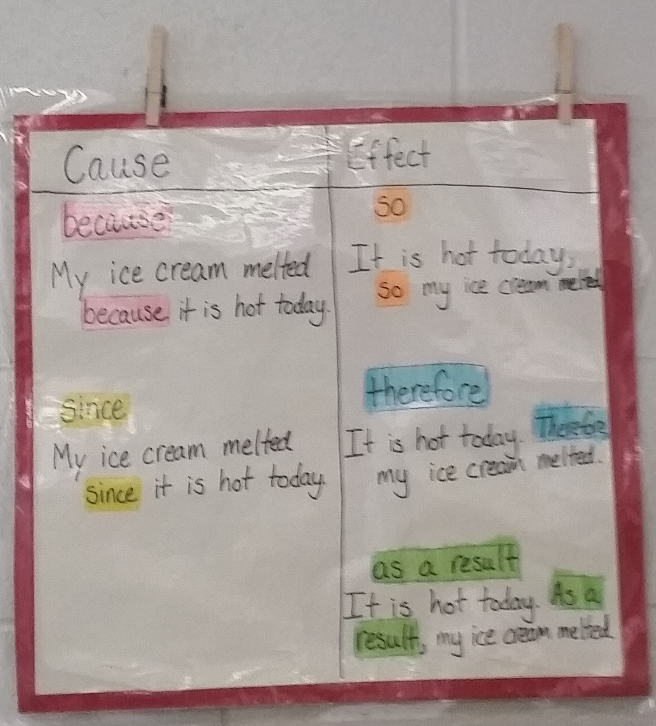So I was just thinking through what’s been going on in the world with the COVID virus, and figured I’d share a few thoughts from an ESL teacher’s point of view.
I figured I’d start with my family’s story first. My wife is Chinese, and she took time off from work to go visit her family in China during the Lunar New Year. Unfortunately, she arrived in the country just as the coronavirus began breaking out. Her experience in China is that everything shut down completely, and people were afraid to leave their homes for fear of contracting the disease. This was compounded by the fact that many people were traveling to their hometowns during the holidays, so you never really knew who had been in contact with someone from a quarantined area. My wife and her family sat in front of the TV most of the day, just looking for news about what was happening.
Thankfully, she was able to return to the United States on her scheduled flight. She was able to fly out of China pretty much the day before all outgoing flights were shut down. We were very thankful to receive her back home safely.
Then things were quiet for a little bit, on the virus front…people in China were still dealing with it, but it hadn’t spread much across the ocean. My wife’s family was all safe, but she had to take a mandatory two weeks at home to make sure she hadn’t contracted the virus herself. Nothing happened, and we were all fine and dandy.
Then the coronavirus started picking up in the United States. After several messages stating that the school systems would not be shut down, my state’s governor made a press announcement one day that schools would be closed for two weeks. This left all of the teachers and administrators in a tizzy, as we tried to figure out what was going to happen. Do we get lessons ready for next week? Do we bunker down at home?
Guidance from supervisors was minimal…and I don’t blame them for that. I mean, they had pretty much the same information that I had. They came up with a plan to implement home-learning packets to support “continuity of education.” That’s great, and makes a lot of sense for Mathematics, Science, Social Studies, and Language Arts teachers. I was a little less sure of my role in that, since I’m more of a specialist and I have students of varying ability and academic levels. Many of my students cannot read the directions for their work and know how to handle it themselves, and moreover, their parents do not necessarily know how to read in their native languages enough to translate it. On top of that, administration requested that teachers leave student names off of the learning packets so that they could be distributed easily. So I was left with the question of how my English Language Learners would receive their specific language-practice packets. In the end, I managed to scramble together some learning materials to be given out, although I know they weren’t all appropriate for the students. (On a sad note, I later learned that the ESL materials weren’t even distributed to any of my students anyway.)
I don’t mean to place any blame or fault on anyone. It was all unprecedented, and everyone was scrambling to come up with some sort of plan. I completely understand why it was a mess, and I don’t know if there was anything better that could be done. Everyone was frustrated.
Back to the story, though. Next, all of the teachers were tasked with making pacing guides for when students returned from school. We would have to make up for the missed time as best we can. A template was given, but again, it didn’t really match up with what the ESL program does (the ESL classes have never had a definitive curriculum, but usually serves as language support for students to succeed in their other core subjects). Oh well–I just did my best and muddled through it again. I was still working on the pacing guide when word came from the state that all schools would now be closed for the rest of the school-year.
So now we have been instructed to hold off on finishing the pacing guides. I assume that I will be asked to provide some sort of distance education or online component for learning, but I have no idea how that is going to work out logistically (I know for a fact that many of my students do not have Internet access at home…and most of them will not do their work if no teacher is standing right next to them anyway. Sorry if that sounds pessimistic, but it’s also realistic. I wouldn’t be very good about doing my schoolwork either unless someone was making sure I did it).
Well, here we are in unprecedented times. I wish I knew how things would work out. I’m not really afraid of the virus, but it would be nice to have a clearer picture of what my role in all of this mess is supposed to be.
Also, I hope this might give some other people a clearer insight into what’s going on behind the scenes in the school systems. Teachers, administrators, service staff, and supervisors alike all have little clue about what to do. So if you are a student or have some at home, just hang on. We’ll try to figure it out. Because we’re teachers, and we are here to teach, in whichever form that ends up taking.



